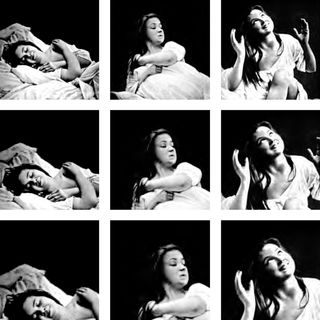
Health
Why Don't More People See a Therapist?
The history of mental illness helps illuminate the roots of stigma.
Posted September 24, 2018 Reviewed by Jessica Schrader
I devote one day a week to conducting intake interviews with clients seeking to begin treatment at my community mental health clinic. After we’ve discussed their presenting concerns, I always ask, “How long do you think this has been going on?” Answers vary, but the vast majority report not feeling right for several years before finally asking for help. When I ask why, most cite beliefs like treatment is only for people who hear voices or are deeply traumatized, people in their family told them they were fine and should just snap out of it, or they didn’t want to be seen as "crazy."

People experiencing mental illness are stigmatized, even criminalized, for their symptoms in a way unlike any other malady. Andrew Scull reveals just how long this has been going on in his Madness in Civilization, the best single-volume history of cultural responses to mental illness that I’ve read. Scull begins at the start of recorded history, finding vestiges of mental suffering in the Hebrew Bible and Homer. It’s his cultural history of the 18th century until the present that most fascinated me.
But first, why “madness”? Readers of Michel Foucault will recognize the subtle shift from his Madness and Civilization to Scull’s Madness in Civilization. Scull deviates from Foucault's account in seeing mental illness as a real organic matter rather than just a social construct to maintain power over the powerless. That being said, Scull is also careful to avoid any anachronisms, taking care not to label those from the past with our modern diagnostic categories. He retains the word “madness” because he is most interested in how culture forms notions about those who mentally suffer, and for most of human history these people were labeled ‘mad.’ While the word is harsh, even brutal, it accurately captures the unfortunate lived history of those with mental illness.
Beginning in the 1700s, mental illness was increasingly seen not as a moral failing as before, but rather the “price one paid for civilization, indeed as afflictions to which the most refined and civilized were particularly prone.” The elite classes began to support the large-scale construction of asylums across the United States and Europe as the concept of mental illness expanded to include the well-off. As these asylums began to swell to capacity, the cultural tides shifted and mental illness was once again seen as something that mostly affected the poor. The well-to-do could be kept at home away from the public eye or at small, expensive asylums, but the vast majority were herded into large public facilities that were shocking in their brutality.
Because those with mental illness were robbed of their agency, we know frustratingly little about what life was like in these asylums, but what we do know is horrifying. Those responsible for treating the mentally ill had few resources available to help them at this time, and as frustration grew at their inability to cure they theorized that it must be due to the profound moral degeneracy of those with mental illness. By the latter half of the 18th century, psychiatrists had witnessed their medical peers advance their knowledge by leaps and bounds with the advent of germ theory and aseptic surgery while experiencing little of these same gains. What had once been a highly-respected discipline now bore its own share of stigma. Charcot attained no small degree of fame in his treatment of ‘hysterics,’ but it would be his student Sigmund Freud who would help psychiatry attain a degree of respectability.
By this point, we are well aware of the advances and failings of Freud and the psychoanalytic enterprise, but aside from all of the baggage carried by psychoanalysis, Freud marked a decisive turning point in the treatment of the mentally ill by actually listening to his patients. Given the history of the asylums, this was no small change. Now in an era with which we are more familiar, the full history of the 20th century need not be recapped. Suffice it to say that two world wars made psychiatry sadly more relevant than ever, and the advent of psychotropic medication in the 1950s and beyond decisively shifted those with mental illness from institutional settings back into the community.
Most would agree that mental health treatment is much more humane—not to mention effective—now than at any other point in human history. Stigma endures, however. Too many people continue to think that experiencing a mental illness is a sign of personal weakness or failure. The work of community mental health begins not when people walk into my clinic, but in the community itself, particularly for those who serve communities that have long lacked adequate mental health care.
An understanding of the past can prove invaluable for understanding how we can do better in the present. Scull’s Madness in Civilization is a sad reminder of the legacy of mental health stigma and a challenge for us to do better.
References
Scull, A. (2015). Madness in Civilization: A Cultural History of Insanity from the Bible to Freud, from the Madhouse to Modern Medicine. Princeton, NJ: Princeton University Press.

